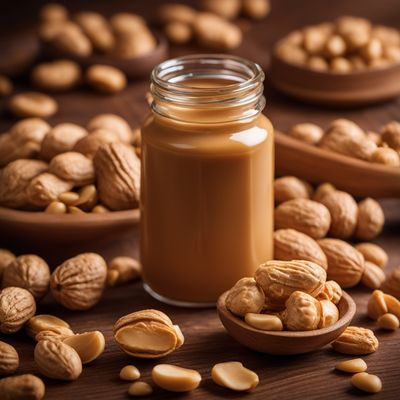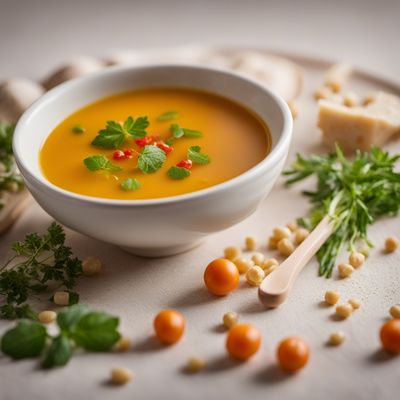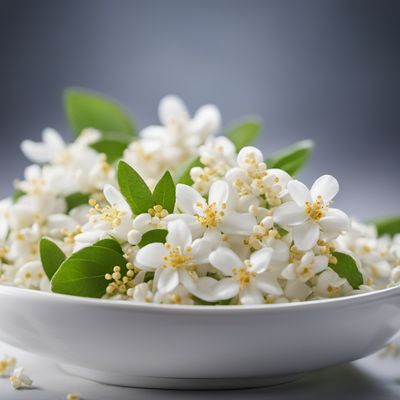
Ingredient
Oregano flavour
The Herbaceous Allure of Oregano
Oregano is a perennial herb with small, oval-shaped leaves that are green and slightly hairy. It has a pungent aroma and a warm, slightly bitter taste. Oregano is commonly used in Mediterranean and Italian cuisines, where it is a staple herb in dishes like pizza, pasta sauces, and roasted vegetables. It pairs well with ingredients like tomatoes, garlic, olive oil, and cheese, enhancing their flavors and adding depth to the overall dish.
Origins and history
Oregano has been used for centuries in Mediterranean cooking and herbal medicine. It is native to the Mediterranean region and has been cultivated since ancient times. Oregano was highly regarded by the ancient Greeks and Romans, who believed it to be a symbol of joy and happiness. It was also used for its medicinal properties, such as its antibacterial and antioxidant effects. Today, oregano is widely cultivated and enjoyed around the world.
Nutritional information
Oregano is a good source of vitamins A, C, and K, as well as minerals like iron, calcium, and manganese. It also contains antioxidants and compounds with antimicrobial properties. Oregano is low in calories and fat, making it a healthy addition to various dishes.
Allergens
There are no known allergens associated with oregano.
How to select
When selecting fresh oregano, look for vibrant green leaves that are free of wilting or discoloration. The leaves should have a strong aroma when crushed. Dried oregano should be stored in an airtight container in a cool, dark place, away from direct sunlight and moisture. It is best to purchase dried oregano in small quantities to ensure freshness.
Storage recommendations
Fresh oregano can be stored in the refrigerator for up to a week. To extend its shelf life, you can also freeze the leaves in an airtight container or preserve them in oil. Dried oregano should be kept in a cool, dark place and used within a year for optimal flavor.
How to produce
Oregano can be easily grown in a garden or in pots. It thrives in well-drained soil and requires full sun to develop its flavor and aroma. Oregano can be propagated from seeds or cuttings, and it benefits from regular pruning to promote bushier growth. With proper care, oregano plants can provide a steady supply of fresh leaves for culinary use.
Preparation tips
To use fresh oregano, simply strip the leaves from the stems and chop them finely. Fresh oregano is best added towards the end of cooking to preserve its flavor. Dried oregano can be used in marinades, sauces, and spice blends. It can be added directly to dishes or rehydrated by soaking it in warm water or oil. Oregano pairs well with tomatoes, garlic, onions, and other Mediterranean herbs like basil and thyme.
Substitutions
Thyme can be used as a substitute for oregano, as they both have similar earthy and herbaceous flavors. Marjoram is another suitable substitute, although it has a milder taste compared to oregano. In some dishes, basil or parsley can also be used as a substitute for oregano, although they will impart a different flavor profile.
Culinary uses
Oregano is a versatile herb that is commonly used in Mediterranean and Italian cuisines. It is a key ingredient in dishes like pizza, pasta sauces, and grilled meats. Oregano can also be used to flavor soups, stews, and roasted vegetables. It pairs well with ingredients like tomatoes, garlic, olive oil, and cheese, adding a savory and aromatic touch to various dishes.
Availability
Oregano is widely available in Mediterranean countries, such as Greece, Italy, and Turkey. It is also cultivated in other parts of Europe, North America, and Asia. Dried oregano can be found in most grocery stores and supermarkets worldwide.
More ingredients from this category » Browse all

Strawberry flavour
The Sweet Symphony of Strawberry Flavour

Pastry flavour
The Essence of Pastry: Unveiling the Flavorful World of Pastry Flavour

Peanut butter flavour
Nutty Bliss: Exploring the World of Peanut Butter Flavor

Barbeque flavour
"Smoky Sensations: Exploring the Allure of Barbeque Flavour"

Garlic flavour
The Aromatic Allium Essence

Peppermint flavour
The Refreshing Essence: Peppermint Flavour

Orange flavour
The Essence of Citrus

Corn flavour
The Essence of Summer: Corn Flavor

Wine flavour
Unlocking the Essence of Wine

Soup flavour
The Secret to Savory Soups

Bitter flavour
Exploring the World of Bitterness

Jasmine flavour
Aromatic Floral Elixir